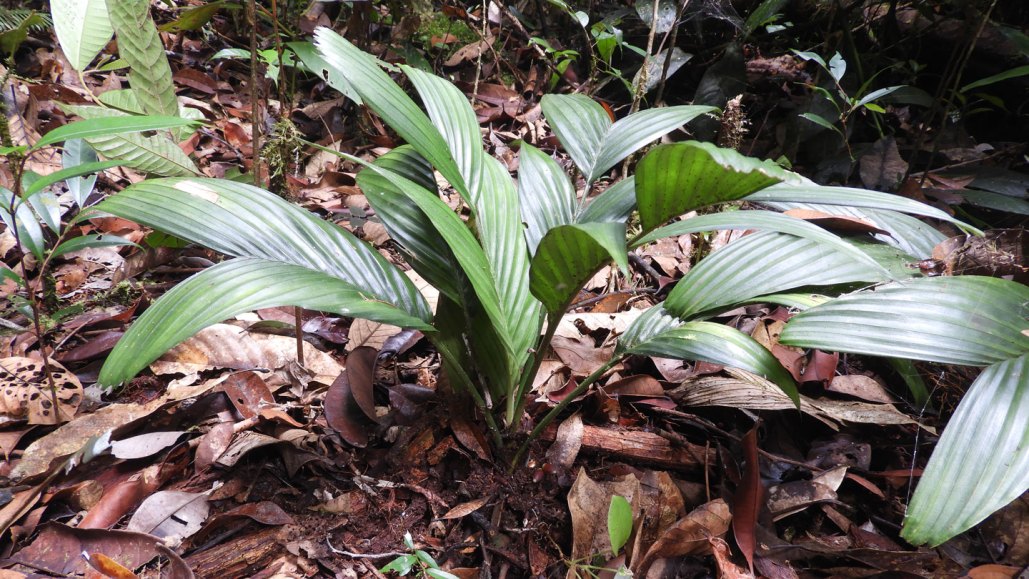Underground Palm Plant Unveils Unprecedented Flowering and Fruiting

Often, palm trees are synonymous with picturesque settings like Hollywood Boulevard or tropical resorts. However, the palm family Arecaceae hosts a variety of breeds that exhibit diverse shapes and sizes. One particular type, the recently discovered Pinanga subterranea, strands out as it grows its flowers and fruit completely underground.
According to Benedikt Kuhnhäuser, a botanist at the Royal Botanic Gardens in Richmond, England, this distinctive palm grabbed researchers' attention because of its odd growing habit.
In the late 1990s, a botanist from Malaysia named Paul Chai first spotted this palm in the Lanjak Entimau Wildlife Sanctuary, located in Borneo. Unfortunately, Chai lost all the photographic evidence of the plant in a flood in Kuching, Sarawak's capital. Nearly two decades later, he shared the information about the lost palm with Kuhnhäuser and his team who were visiting Borneo. Surprisingly, their several-day journey to the sanctuary revealed that this unique underground palm was quite plentiful.
Underground growth, apart from roots, is uncommon in the plant kingdom but not unheard of. A variety of such examples can be found in the “underground forest” of South-central Africa and a Bornean pitcher plant (SN: 7/8/22) that hides its traps beneath the soil. However, concealing both flowers and fruits underground takes this phenomenon to a rarer level. "There is only one other plant in the world doing this, a small orchid genus named Rhizanthella in Australia," Kuhnhäuser reveals.
While this palm may be fresh to scientific knowledge, it's certainly not unknown to the indigenous people living close by. Many locals, particularly Indigenous ones, were already aware of this plant, says botanist Cibele de Cássia Silva from the University of Campinas, Brazil. Moreover, its fruit is consumed by some locals as a snack. Both Cássia Silva and Kuhnhäuser emphasise engaging with and including indigenous knowledge in scientific research.
The biological aspect of this palm is also worth noting. Typically, pollination and seed dispersal are crucial for plants, and achieving these processes underground presents a challenge. The palm may depend on self-pollination, and beetles could potentially transfer pollen from one plant to another underground. Wild pigs digging up its fruits could also contribute to seed dispersal. The researchers published their findings and the unique biology of the plant in the journal Palms in June 2023.
Currently, Sidonie Bellot, a colleague of Kuhnhäuser at Kew, is working on deciphering the relationship between the underground palm and its earthbound relatives. This research could reveal the adaptation process that enabled the palm to adopt its subterranean lifestyle. Considering that many of its relatives grow close to the ground, progressing to completely underground growth might not have been a significant change.




